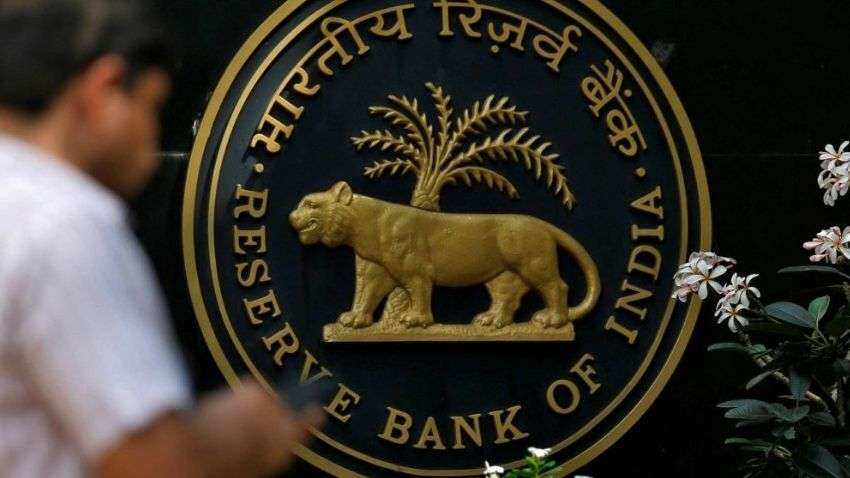Expect status quo on key policy rates, analyst opines; liquidity remains a key concern as RBI MPC announcements today
India's central bank is likely to not tinker with key policy rates, keeping benchmark interest rates unchanged, analysts opine. They also expect a status quo in its stance.

India's central bank is likely to not tinker with key policy rates, keeping benchmark interest rates unchanged, analysts opine. They also expect a status quo in its stance. The Monetary Policy Committee (MPC) of the Reserve Bank of India (RBI) is scheduled to release its fourth bi-monthly policy decision on Wednesday, December 8, 2021.
See Zee Business Live TV Streaming Below:
The MPC during its October meet had kept the interest rates unchanged to 4 per cent and the reverse repo rate at 3.35 per cent with an accommodative stance for the 8th time in a row.
Terming it as a close call, Emkay Global Financial Services pointed out that the RBI will likely avoid a cliff edge in the upcoming policy with any material reverse repo rate hike.
“The policy will likely again be used as a lever to prepare the markets for a gradualist approach toward normalization. The redistribution/re-pricing of existing liquidity via VRRR tenor/quantum/cut-offs has smoothly helped the alignment of some money market rates toward the Repo rate,” according to the domestic brokerage firm.
It believes, the domestic markets will still be assuaged about any premature tightening of financial conditions.
The markets on Tuesday witnessed a massive buying as both Sensex and Nifty gained over 1.5 per cent, mainly led by bank, financial and metal stocks at the market close today.
However, the brokerage firm further states that the liquidity deluge dilemma will continue in the coming months as well. The journey from current Rs 8.5 trillion plus system liquidity to a pre-Covid Rs 2 trillion plus will be a long-drawn one, it added.
The RBI may have to explore new tools to manage durable liquidity or any idiosyncrasies amid collateral constraints under VRRRs, Emkay Global expects an alternative from the central bank.
In the brokerage’s view, the introduction of uncollateralized SDF could significantly enhance the central bank’s sterilization capacity. SDF, at a penal floor rate lower or equal to the reverse repo rate, would not only alleviate the collateral constraint, but also have the triple benefits, it added.
The multiple benefits are: Boosting banks’ G-Sec demand to maintain their usual/requisite SLR when a part of the main liquidity operation moves to SDF from the reverse repo; encouraging banks to lend instead of parking at low remunerative rates; and lowering/keeping comfortable the entire rate structure as the RBI normalizes the corridor/liquidity, and thus, could placate the doves in the MPC.
Similarly, the RBI is expected to be maintain its growth focus given the uncertainties associated with the scale of economic recovery and will continue with the accommodative monetary policy stance even as it moves towards gradual normalization of support, CARE Ratings said in its preview note.
The rating agency expected, the MPC to maintain interest rates that is the repo rate and reverse repo rate at a record low of 4 per cent and 3.35 per cent respectively. And, do not foresee a policy rate hike before first quarter of the financial year 2022-230.
On the liquidity front, the rating agency mentioned that the RBI would also ensure adequate liquidity in present in the banking system to stimulate credit dispersal. “We however do not anticipate any new liquidity measures in this policy,” it said.
Surplus liquidity would be managed in a calibrated manner through the conduct of VRRR auctions for varying tenors and higher quantum, CARE Ratings said in its preview report ahead of MPC decision.
Get Latest Business News, Stock Market Updates and Videos; Check your tax outgo through Income Tax Calculator and save money through our Personal Finance coverage. Check Business Breaking News Live on Zee Business Twitter and Facebook. Subscribe on YouTube.
RECOMMENDED STORIES
08:17 AM IST











 SBI writes to RBI to consider non-financial transactions as well for tagging an account as operative
SBI writes to RBI to consider non-financial transactions as well for tagging an account as operative Banks should adopt 'bottom-up' approach for preparing credit plan: RBI's Swaminathan
Banks should adopt 'bottom-up' approach for preparing credit plan: RBI's Swaminathan RBI lifts restrictions on Sachin Bansal's Navi Finserv
RBI lifts restrictions on Sachin Bansal's Navi Finserv India's services exports rise 22.3% to $34.3 billion in October, as per RBI data
India's services exports rise 22.3% to $34.3 billion in October, as per RBI data  RBI working to create robust data analytics ecosystem: Dy Guv Swaminathan
RBI working to create robust data analytics ecosystem: Dy Guv Swaminathan